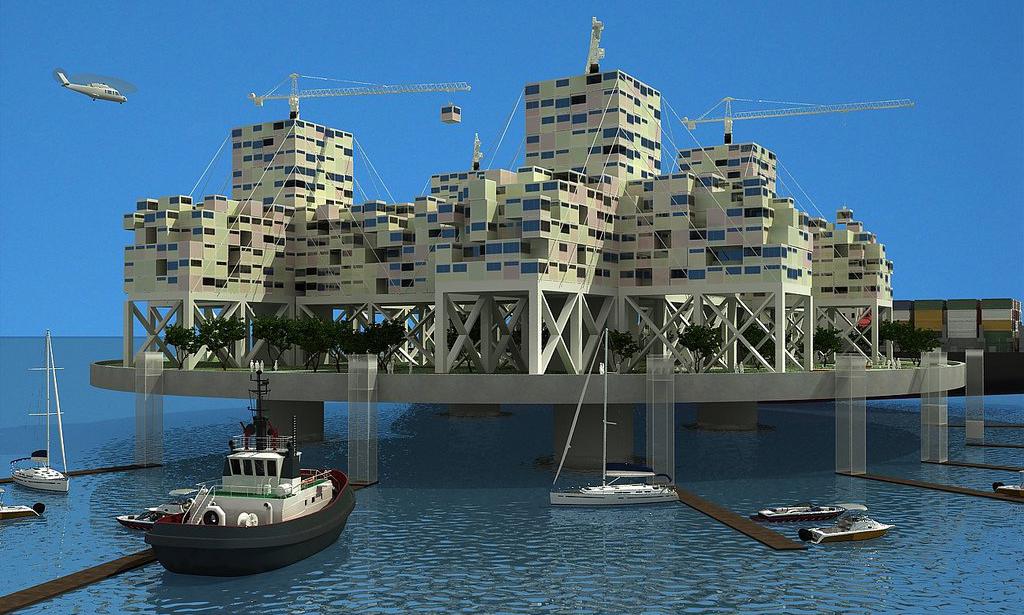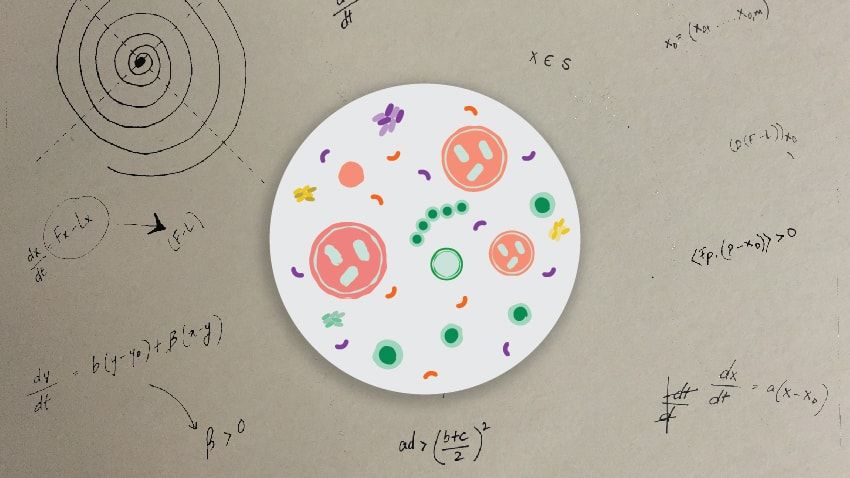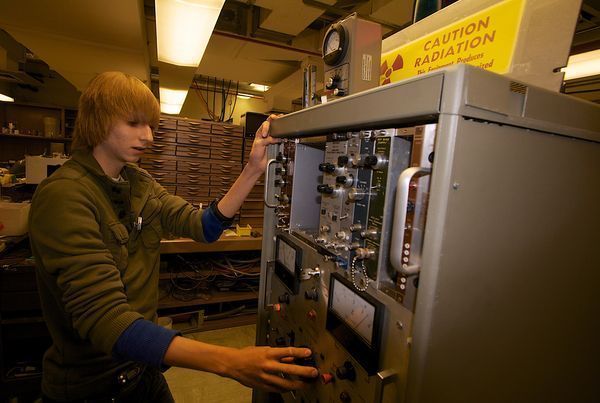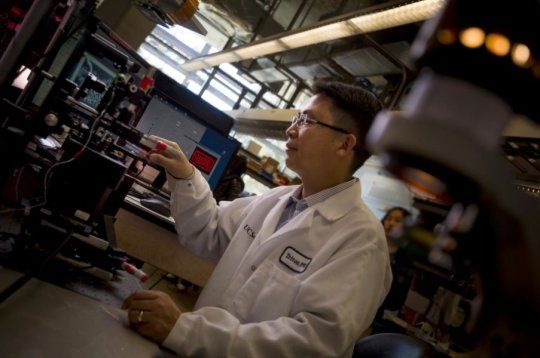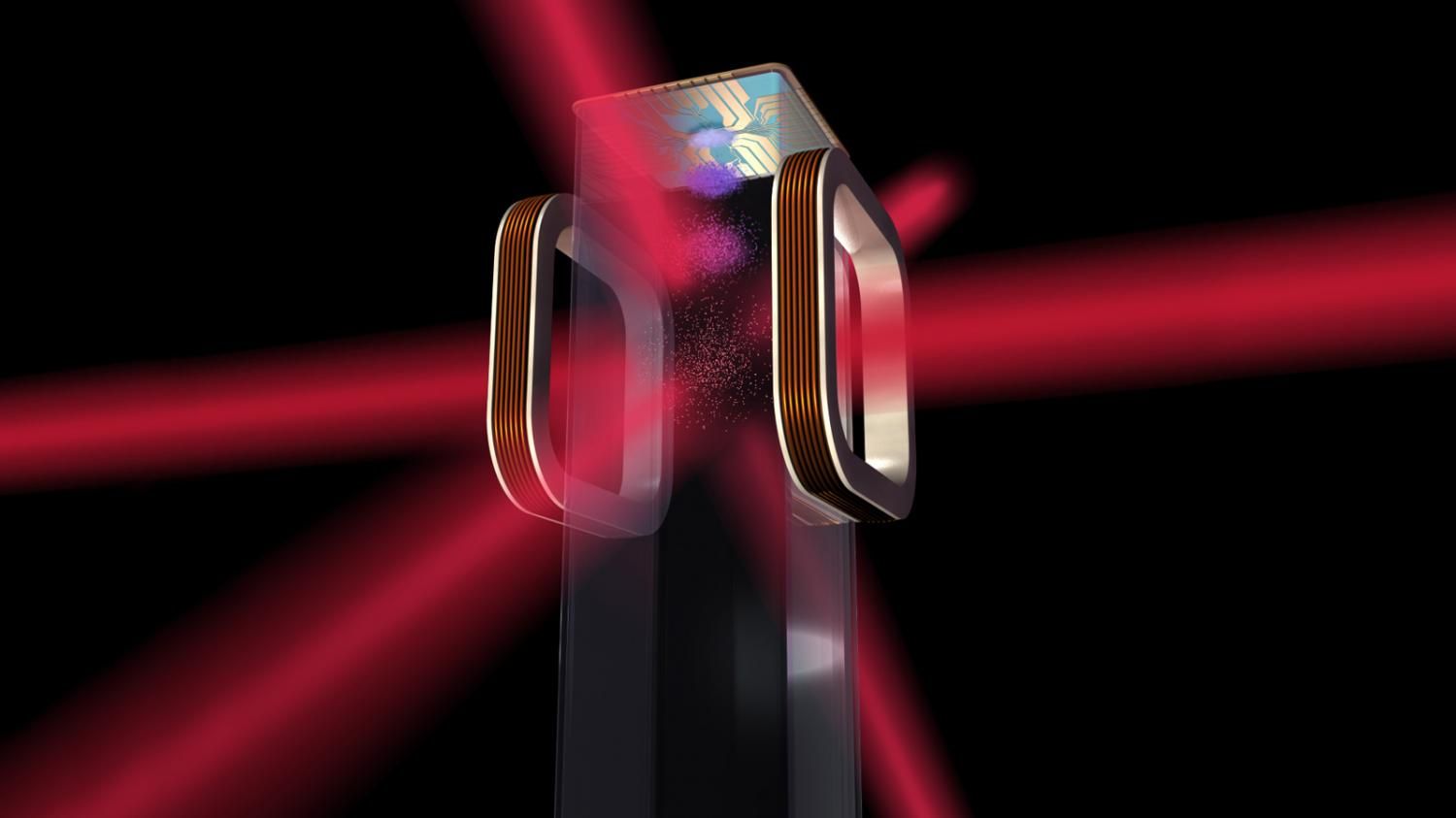Page 10480
Mar 6, 2017
Seasteaders Plan to Build a Libertarian Utopia on the High Seas
Posted by Shailesh Prasad in category: governance
Mar 6, 2017
Can math help explain our bodies—and our diseases?
Posted by Shailesh Prasad in categories: biotech/medical, genetics, mathematics
What makes a cluster of cells become a liver, or a muscle? How do our genes give rise to proteins, proteins to cells, and cells to tissues and organs?
The incredible complexity of how these biological systems interact boggles the mind—and drives the work of biomedical scientists around the world.
But a pair of mathematicians has introduced a new way of thinking about these concepts that may help set the stage for better understanding of our bodies and other living things.
Mar 6, 2017
How To Build A Home Fusion Reactor
Posted by Shailesh Prasad in categories: nuclear energy, physics
Mar 6, 2017
How Reprogrammed Cells Gave Old Mice New Youth
Posted by Shailesh Prasad in category: life extension
Aging isn’t a one-way street, finds a new study in which aged mice had their youthfulness restored.
Mar 6, 2017
Nanoengineers 3D print biomimetic blood vessel networks
Posted by Shailesh Prasad in categories: 3D printing, bioengineering, bioprinting, biotech/medical
The new research, led by nanoengineering professor Shaochen Chen, addresses one of the biggest challenges in tissue engineering: creating lifelike tissues and organs with functioning vasculature — networks of blood vessels that can transport blood, nutrients, waste and other biological materials — and do so safely when implanted inside the body.
Researchers from other labs have used different 3D printing technologies to create artificial blood vessels. But existing technologies are slow, costly and mainly produce simple structures, such as a single blood vessel — a tube, basically. These blood vessels also are not capable of integrating with the body’s own vascular system.
“Almost all tissues and organs need blood vessels to survive and work properly. This is a big bottleneck in making organ transplants, which are in high demand but in short supply,” said Chen, who leads the Nanobiomaterials, Bioprinting, and Tissue Engineering Lab at UC San Diego. “3D bioprinting organs can help bridge this gap, and our lab has taken a big step toward that goal.”
Continue reading “Nanoengineers 3D print biomimetic blood vessel networks” »
Mar 6, 2017
Creating Animals from Imagination (And DNA Sequencing)
Posted by Shailesh Prasad in category: biotech/medical

Austen Heinz was Founder and CEO of Cambrian Genomics. With his company, Austen hoped to change the world by democratizing access to DNA through cost-effective and fast DNA laser printing. Austen will always be remembered as one of the most passionate, creative people to have spoken at Draper University.
For more great content, check out:
Videos and livestreams: http://www.drapertv.com
Residential program: http://www.draperuniversity.com
Online Courses: http://www.courses.drapertv.com
Continue reading “Creating Animals from Imagination (And DNA Sequencing)” »
Mar 6, 2017
The World’s Largest Shipping Company Trials Blockchain to Track Cargo — By Jamie Condliffe | MIT Technology Review
Posted by Odette Bohr Dienel in category: transportation
“The shipping company Maersk has now announced that it has been working with IBM to use the blockchain to keep track of shipments as they’re hauled across the seas.”
Tags: blockchain, shipping
Mar 6, 2017
NASA wants to create the coolest spot in the universe
Posted by Andreas Matt in categories: particle physics, space
This summer, an ice chest-sized box will fly to the International Space Station, where it will create the coolest spot in the universe.
Inside that box, lasers, a vacuum chamber and an electromagnetic “knife” will be used to cancel out the energy of gas particles, slowing them until they’re almost motionless. This suite of instruments is called the Cold Atom Laboratory (CAL), and was developed by NASA’s Jet Propulsion Laboratory in Pasadena, California. CAL is in the final stages of assembly at JPL, ahead of a ride to space this August on SpaceX CRS-12.
Its instruments are designed to freeze gas atoms to a mere billionth of a degree above absolute zero. That’s more than 100 million times colder than the depths of space.
Mar 6, 2017
Hard drives of the future could be made of DNA
Posted by Shailesh Prasad in categories: biotech/medical, computing, internet, mathematics
Our data-driven society is churning out more information than traditional storage technology can handle, so scientists are looking for a solution in Nature’s hard drive: DNA. A pair of researchers at Columbia University and the New York Genome Center recently wrote a full computer operating system, an 1895 French film, an Amazon gift card and other files into DNA strands and retrieved them without errors, according to a study published in the latest edition of Science.
There are several advantages to using DNA. It’s a lot smaller than traditional media; a single gram can fit 215,000 times more data than a one terabyte hard drive, The Atlantic notes. It’s also incredibly durable. Scientists are using DNA thousands of years old to de-extinct wooly mammoths, for example. But, until now, they’ve only unlocked a fraction of its storage capacity. Study coauthors Yaniv Erlich and Dina Zielinski were able to fit the theoretical maximum amount of information per nucleotide using a new method inspired by how movies stream across the internet.
“We mapped the bits of the files to DNA nucleotides. Then, we synthesized these nucleotides and stored the molecules in a test-tube,” Erlich explained in an interview with ResearchGate. “To retrieve the information, we sequenced the molecules. This is the basic process. To pack the information, we devised a strategy—called DNA Fountain—that uses mathematical concepts from coding theory. It was this strategy that allowed us to achieve optimal packing, which was the most challenging aspect of the study.”
Continue reading “Hard drives of the future could be made of DNA” »

